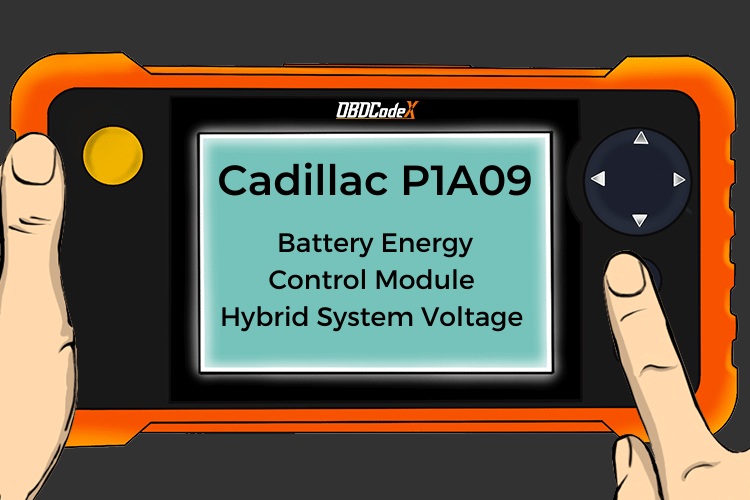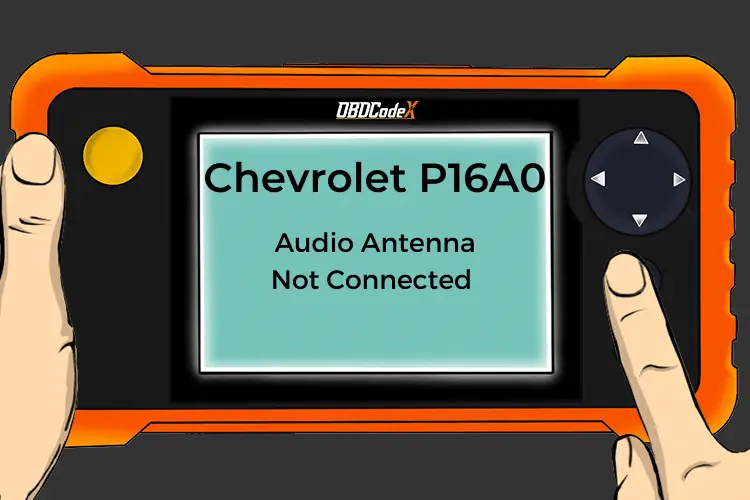P052E: Positive Crankcase Ventilation Regulator Valve Performance
Is your scanner showing P052E?
No worries. We'll show you what it means and how to deal with it.
P052E: Positive Crankcase Ventilation Regulator Valve Performance
OVERVIEWWhat Does The P052E Code Mean?
If you have a code P052E stored in your OBD-II vehicle, it means that the powertrain control module (PCM) has detected a signal from the crankcase pressure sensor that indicates an inappropriate degree of pressure exists.
Air density (pressure) in the engine crankcase is monitored by the PCM using an input voltage signal from the crankcase pressure sensor. Crankcase pressure sensor input voltage is received (by the PCM) as actual units of pressure. Either kilopascal (kPa) units or inches of mercury (Hg) are used to measure crankcase pressure. The crankcase pressure sensor is typically located in or near one of the valve covers.
Because the lower end of the internal combustion engine must be sealed to prevent oil leaks, a certain amount of pressure is created there. This pressure is caused by drastic changes in temperature, the vapors created by engine oil, and the rapid centrifugal motion of the crankshaft, connecting rods, etc.
The positive crankcase ventilation (PCV) system uses carefully controlled intake vacuum to draw pressure from the crankcase through a specially designed valve (PCV valve) that only allows a single direction of flow. In the vast majority of vehicle applications, the PCV valve uses straight vacuum from the intake manifold. In this particular application, PCV vacuum is regulated using an electronically controlled PCV regulator valve. The PCM uses an input signal from the crankcase pressure sensor to determine how much vacuum pressure must be applied to the PCV for optimum performance.
A constant supply of battery voltage is usually applied to one terminal of the PCV regulator valve and the PCM supplies a ground as needed to complete the circuit, position the regulator valve in its housing, and realize the desired degree of PCV vacuum.
If the PCM detects that the desired level of crankcase pressure cannot be achieved with the PCV regulator valve, a code P052E will be stored and a malfunction indicator lamp (MIL) may be illuminated.
What Are The Symptoms Of The P052E Code?
Symptoms of a P052E engine code may include:
- Engine oil leaks
- Smoke (steam) from underhood area
- Hissing (sucking) noise from engine area
- Drivability issues created by a vacuum leak
What Are The Potential Causes Of The P052E Code?
Causes for this code may include:
- Bad PCV regulator valve
- Faulty PCV valve
- Defective crankcase pressure sensor
- Open or shorted PCV regulator valve/crankcase pressure sensor wiring
- PCM malfunction or PCM programming error
How Serious Is This P052E Code?
Incorrect crankcase pressure may result in engine oil leaks. A code P052E should be categorized as severe and addressed accordingly.
How Can You Fix The P052E Code?
In my experience, a manual vacuum pressure gauge, a diagnostic scanner, a digital volt/ohmmeter (DVOM), and a reliable source of vehicle information will be necessary when diagnosing a code P052E.
A manual vacuum pressure test should be performed prior to diagnosing any insufficient crankcase pressure/PCV related codes. If the engine fails to produce enough vacuum, it must be repaired before moving forward with your diagnosis. To conduct a manual vacuum pressure test, disconnect the PCV vacuum hose and attach your vacuum pressure gauge to it. Your vehicle information resource should yield specifications regarding minimum engine vacuum.
Check all PCV hoses for signs of cracking or breakage and make repairs as necessary. Cracked or collapsed PCV vacuum hoses may contribute to the conditions which caused the P052E to be stored.
If the engine is in good working order and there are no vacuum leaks, continue with a visual inspection of all PCV regulator valve and crankcase pressure sensor wiring and connectors. Make repairs as needed.Next, I would connect the scanner to the vehicle diagnostic port and retrieve all stored codes and freeze frame data. Writing this information down may aid you as your diagnosis unfolds. After that, clear the codes and test-drive the vehicle to see if the code is reset.
Utilize your vehicle information resource to obtain connector face views, wiring diagrams, connector pin-out charts, component testing procedures and specifications. All this information will be required to proceed with your diagnosis.
Test PCV regulator valve and circuits (KOEO)
- Use the scanner to manually activate the PCV regulator valve
- Probe the power supply circuit for the PCV regulator valve with the positive test lead of the DVOM
- Use the negative test lead to test the PCV regulator valve ground
- If there is battery voltage at the PCV regulator valve connector, suspect that the valve is defective
- You may test the valve using the DVOM
- If it fails to comply with recommended specifications, it is definitely no good
- If there is no voltage at the PCV regulator valve connector, proceed to the next step
Test for a PCV regulator valve voltage output circuit at the PCM connector
- Use the positive test lead of the DVOM to probe PCV regulator valve output voltage at the PCM connector
- The negative test lead should be connected to a known good ground
- If there is an output voltage signal at the PCM connector, that is not present at the regulator valve connector, you have an open circuit between the two
- If there is no PCV regulator valve output signal present at the PCM connector, proceed to the next step
Test the crankshaft pressure sensor using the DVOM
- With the key on and engine off (KOEO), place the DVOM on the ohms setting and follow manufacturer’s procedures/specifications for testing the crankcase pressure sensor with the connector unplugged
- If the sensor in question does not comply with manufacturer’s specifications, it should be considered defective
- If the sensor does comply with manufacturer’s specifications, move on to the next step
Use the DVOM to test for reference voltage (typically 5-volts) and a ground at the crankcase pressure sensor connector
- With the KOEO and the crankcase pressure sensor unplugged, probe the reference voltage pin of the sensor connector with the positive test lead of the DVOM
- Connect the negative test lead to the ground pin of the connector to test the entire circuit
- If there is no reference voltage detected at the sensor connector, locate the PCM and test the corresponding circuit at the PCM connector. Use the positive test lead of the DVOM
- The negative test lead should be connected to a known good ground for this test
- If there is no reference voltage at the PCM connector, suspect PCM failure or a programming error
- If there is no ground at the sensor connector, use your source of vehicle information to locate the ground source and make sure that it is securely fastened to the engine block or battery
- If there is reference voltage and ground at the crankcase pressure sensor connector, proceed to the next step
Test crankcase pressure sensor signal circuit voltage using the DVOM
- With the key on engine running (KOER) and the crankcase pressure sensor reconnected, use the positive lead of the DVOM to probe sensor signal voltage right behind the connector
- The negative test lead should again be connected to a battery ground
- Use the vacuum pressure gauge to obtain correct crankcase pressure and compare sensor signal voltage to the pressure-to-voltage chart in your vehicle info resource
- If crankcase pressure sensor signal voltage is incorrect, consider the sensor faulty
- If crankcase pressure sensor signal voltage (at the sensor connector) reflects the correct degree of voltage, proceed to the next step
Test the crankcase pressure sensor signal circuit at the PCM connector
- With the KOER, use the DVOM positive test lead to probe the crankcase pressure sensor signal circuit at the PCM connector
- The negative test lead should be connected to a battery ground
- If a correct crankcase pressure sensor signal is discovered at the sensor connector but not at the corresponding circuit of the PCM connector, suspect that there is an open circuit between the two
If the PCV regulator valve/crankcase pressure sensor and all circuits are within specifications, suspect PCM failure or a PCM programing error.
Note: Technical service bulletins (TSB) which parallel the vehicle in question (as well as the symptoms and codes stored) may help with your diagnosis
Recommended Parts
Below are some recommended auto parts to help you address the trouble code affecting your vehicle and get it running smoothly again:
>>> Ensun PCV Pressure Regulating Valve
>>> PCV Valve
>>> Crankcase Pressure Sensor
>>> Twippo 372Pcs Waterproof Wire Connectors Kit
>>> ECU
>>> Autel Scanner MaxiCOM MK808S
>>> KAIWEETS Digital Multimeter
Note: During the purchasing process, please check carefully whether the part you want to buy fits your car!
Check This Video For Reference
Reference Sources
P052E Positive Crankcase Ventilation Regulator Valve Performance, OBD-Codes.




